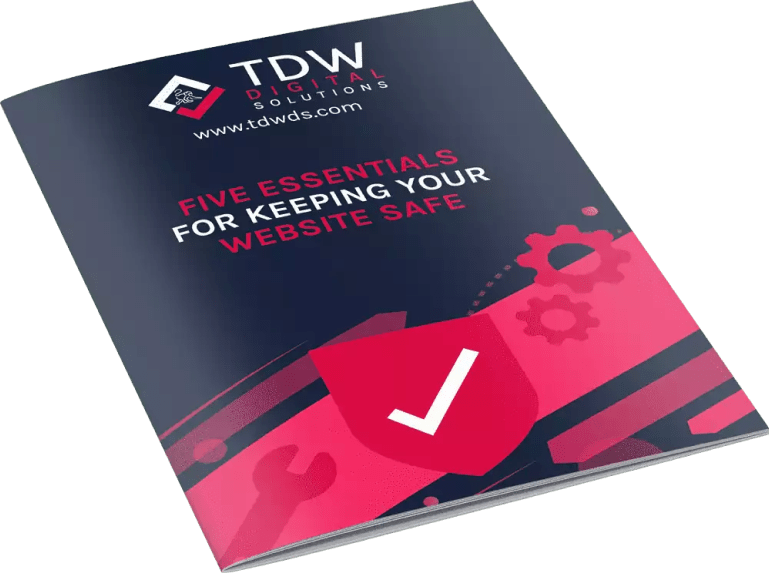Ever seen a business that had a beautiful, modern store, yet also brochures that looked like they were printed in the 1990s? Or perhaps you were impressed by a sleek, compelling direct mailer, then visited the brand’s website to find that it was a clunky, GIF-filled mess.
It’s important to provide a cohesive, consistent experience for your audience, especially if you’re reaching out to them via both print and digital materials. Think of your marketing collateral as a roadmap for your buyer’s journey. They want to see a clear path to success. If your website, print advertisements, and social media presence confuse them, you won’t earn their trust. With that in mind, here’s how to ensure that your web design and print marketing collateral match up for optimal effect.
The Importance of Marketing Collateral
It used to be that businesses could send out catalogs and door-to-door salesmen to get customers. Brands took their leads down a classic sales funnel, from cold outreach to closing the deal.
Things aren’t that simple anymore. Consumers want both quick answers and the opportunity to research brands for themselves. With the astronomical growth of social media, people can now verify companies’ claims by checking reviews. Moreover, people have been burned by scammers — or they’re simply skeptical in nature.
Marketing collateral is how you forge trust among your audience and demonstrate your value to them. It tells your brand’s story in a way that resonates with your potential customers so that they can “Know, Like, and Trust” you — the core of branding.
How to See If Your Digital and Print Collateral is Aligned
Any mismatches among various parts of your collateral can be jarring. This is obviously not ideal. You want a clear, easy path for the buyer’s journey. The moment you give people a reason to doubt, you lose their attention and damage their trust in you.
These days, many buyer’s journeys are crossing the boundaries between the physical and digital realms. Consumers now expect to use a brand’s app even when they’re shopping in-store, and they want a seamless connection among a brand’s social media, website, and physical presence.
If your brand design is not consistent across these channels, you’re sending mixed messages. Everything from visual identity to the overall tone and message helps with brand development. It’s important to be consistent.
To assess your brand’s cohesiveness, do a print materials review and website audit. Here are some common signs that you need to better align your digital and print marketing collateral:
- Your print advertisements (e.g. flyers, direct mailers) are sending traffic to your website, but that traffic isn’t converting.
- Consumers send you questions asking if you’re the same company they saw on a different channel.
- Your website and print materials use different colors, fonts, or copywriting styles.
- You don’t see a lot of overlap between your in-store customers and your e-commerce customers.
It’s worth noting that your marketing collateral includes pretty much anything you use to promote your business or convert leads. That means you should evaluate everything from your website and all its content (including e-books and infographics) to your billboards. No one should doubt that they are seeing the same brand on all these different channels.
If you see a clear disjunction between your print and digital collateral, it’s time to get all your designer and copywriters on the same page. Ensure that you are using the same typefaces, font styles and proportionate sizes, logo version, and colors across all material. (Tip: Be sure you’ve correctly converted your CMYK printing colors to HEX for web use, and vice versa.)
Then, check for consistent tone, voice, taglines, and other language. Your social media captions and website text should not be wildly different from your brochures’ or print ads’ copywriting style. It’s okay to use a slightly more casual tone on social media, but make sure that your brand story and values are clearly expressed everywhere.
Marrying Print and Digital Marketing
Once you’ve aligned your print and digital collateral, the possibilities for cross-channel marketing are endless. You can create innovative new print materials that drive consumers to your app, social media, or downloadable content. Think outside the box: people want to be entertained and informed, so things like custom-illustration stickers, how-to booklets, and postcards are all great ways to get people engaged.
You can use QR codes to instantly drive customers to your digital channels. With a consistent brand presence, there will be much less friction as you nurture leads toward purchase. Ideally, your print collateral lays a strong foundation for your digital presence, so that customers will feel immersed in your brand as they move down your funnel.
Wrapping Up
Print-to-digital marketing is a powerful way to elevate your brand and drive more sales, but you must have consistent collateral to pull it off. Anyone who scans a QR code on a clearly branded direct mailer, only to arrive at a website that looks entirely different, will be suspicious. You also want to be certain that you’re easily distinguished from your competitors, and that can be difficult if your web collateral is very generic compared to your print collateral (or vice versa).Master the art of cross-channel marketing with a cohesive brand identity. For expert assistance, reach out to TDW Digital Solutions. We provide branding services tailored to your startup or small business. With print management, web design, and more, we ensure that your brand makes a powerful impact no matter your marketing strategy.






